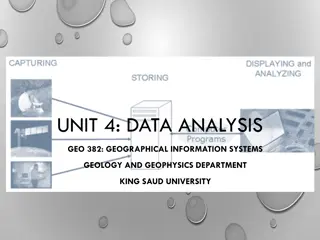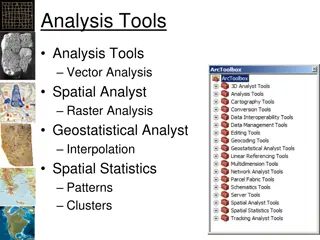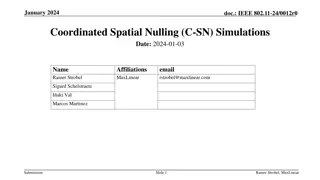Exploring Solidarity, Good Causes, and Socio-Spatial Identity
Delve into the concepts of solidarity, choosing a good cause for fundraising, and socio-spatial identity in a project setting. Discuss the proximity factor in determining solidarity, analyze decisions regarding sponsorships for projects focusing on women, children, health, or nutrition in varying geographical locations, and reflect on the political aspect of social awareness and actions.
Download Presentation

Please find below an Image/Link to download the presentation.
The content on the website is provided AS IS for your information and personal use only. It may not be sold, licensed, or shared on other websites without obtaining consent from the author. Download presentation by click this link. If you encounter any issues during the download, it is possible that the publisher has removed the file from their server.
E N D
Presentation Transcript
Solidarity: Who gets the money?
2 Schools and Exchange materals Getting to know activities: Happy Family Memory Card game Statements Traffic Light Snowball related to levels concern Theory Starting-up activities Theory Hypothesis selected countries Diamond ranking motives not to give money *to be adapted Hypothesis respondent groups Theory Explanation dimensions Explanation statements Classroom Reading background information Discussing results: step by step Hypothesis selected countries Hypothesis respondent groups Explanation dimensions Explanation statements Classroom Reading background information Discussing results: step by step Core Traffic Light money Intelligent Guesswork Map Recap Climate Change Diamond rank ng types energy Class diamond Case Study project Gallery walk Reflection Traffic Light money Intelligent Guesswork Maps Follow-up activities
Which good cause do you choose? As part of a project week, you decide to raise money for a good cause. You are on the project committee. There is a discussion about who should get the sponsorship money: A project that focuses on women, children, nutrition or health in 1. the neighbourhood of the school, 2. a similar project in the region, 3. a project somewhere else in the Netherlands, 4. a project in Southern or Eastern Europe or 5. a project outside of Europe. A. Decide for yourself to which project you would like to give the money and why. B. Compare your answer with that of your classmates (in a small group). C. Discuss your decisions in the class.
Read the text Giving money for a good cause is a sign of solidarity. An important aspect here is socio-spatial solidarity. This is about proximity linked to identity: The closer (a group of) people are geographically to each other, the higher the degree of solidarity. Europeans are generally more concerned with the living conditions of people who live closer, such as people in their neighbourhood, region or country, than with those of people who live in the rest of Europe or the world. D. To what extent does this theory apply to you and your class?
When are you politically ? Source: https://commons.wikimedia.org/wiki/File:Links_und_Rechts.svg
Read the text When we talk about politics and political parties, we often make a distinction between left and right. What does this mean? If we look at economic issues, the Left stands for regulations to promote equality. For example, a higher minimum wage or higher taxes for higher incomes. The Right stands for freedom and as few barriers and regulations as possible. For example, no or low taxes on company profits or no restrictions on overtime. If we look at social and cultural issues, the Left stands for freedom of individuals. For example, people should be able to make their own decisions about abortion or euthanasia and the use of soft drugs. Whereas the Right wants rules and, for example, wants to restrict the right to euthanasia or ban the use of soft drugs. E. To what extent does the text correspond to your ideas?
Where is your position ? left 0 1 2 3 4 5 6 7 8 9 10 right
Where is your position ? F. Was it easy to make a choice in Question 4? Why or why not? Discuss this with your classmates (in a group). You can change your choice after the discussion: left 0 1 2 3 4 5 6 7 8 9 10 right
WHAT ARE DIMENSIONS? Social scientists formulate hypotheses, which they support with arguments. If possible, they then try to prove their ideas with data. You are now going to answer questions that social scientists use to measure dimensions. You should imagine a dimension as a line with opposing views at the ends. dimension ++ - - Only Coffee Only Tea Mostly Coffee Mostly Tea Coffee and Tea - One of the dimensions is about socio-spatial solidarity, the other is about whether one is political left-right self-placement. Sources: https://commons.wikimedia.org/wiki/File:A_small_cup_of_coffee.JPG https://tr.m.wikipedia.org/wiki/Dosya:Lipton-mug-tea.jpg
WHAT DO YOU THINK? GO TO: www.atlasofeuropeanvalues.eu Go to CLASSROOM Then to JOIN Classroom Use the STUDENTS CODE .. PLEASE ANSWER THE QUESTIONS CAREFULLY. READY? THEN LEAVE THE CLASSROOM & WRITE DOWN THE REASONS FOR YOUR ANSWER.
NOW THE RESULTS SHOULD BE DISCUSSED In the beginning, the teacher explains on which axis the dimension spatial solidarity and on which axis political left-right self-placement are located. First, only the results of the class as a whole are shown. Then these class results are compared with the results for the average for the Netherlands: How can we explain similarities and/or differences? Then the results of the individual students are shown. Do we see big differences? Why (not)? How would it be for the Dutch results? Then the results for all countries (average) are shown: Do we see a correlation between spatial solidarity and political left-right self- placement? The data without class results are shown below ....
Own research G. You are now going to do your own research: 1. Go to www.atlasofeuropeanvalues.eu 2. Go to Class. 3. Choose Explore. 4. Choose for the x-axis: social-spatial solidarity and for the y-axis political self-placement from left to right. 5. Now choose three countries that have very different scores, e.g. Russia, Sweden and Germany. You do that by clicking on ALL and selecting RU, SE and DE. 6. Now go to respondent groups and select low education and high education. Low education is then shown with a blue border and high education with a red circle. What do you notice when you compare the results? And how could you explain the results?
Own research 7. You can now compare other specific groups: for example, people who live in a big city or not, men and women, people with low and high incomes, people who are religious or not, or people who have a migration background or not. First formulate the relationship you expect, and then check whether you are right. How can you explain the results? Respondent group: Expectation: Result: Explanation:
Read the text Research shows that there are differences between groups of individuals when it comes to solidarity: Those with higher education have developed a better understanding of the need to contribute to the common good and show more solidarity than those with less education. Helping others can also be seen as a "luxury", meaning that only well-off people can afford to meet the needs of others. In terms of age, older people are more supportive than younger people. They identify more with other older, sick and disabled people. Migrants are thought to be less inclusive because they feel less of a connection with the majority of the population. In general, we can say that 'social distance' is important: the closer people are to others, the more they identify with them and the more they show solidarity. When it comes to religion, moral obligations play a more dominant role. Religions ask people to donate time and money to help the less fortunate, and religious people appear to be more supportive of needy people than non-religious people. Moreover, women may have more values of caring and mutual responsibility, and married persons may have a greater sense of responsibility towards other people than single persons, which means that both groups show a higher level of solidarity. Solidarity is strongly influenced by political preferences, such as left or right. The fact that right-wing individuals have more reservations when it comes to solidarity may be related to the fact that right-wing ideology is less based on equality and prosperity for all. H. To what extent can you find the given explanations in the data you examined? I. Which statements are more or less correct in your opinion?
Project in another country In the end, you decided in the project committee that the money should go to a project in another country. There are now five projects in five different countries. On the basis of an analysis of various data, you now want to come to a conclusion.
Project in another country Work in a group. 1. Put the data from table M1 into a spider diagram (M2). An example of such a diagram is shown opposite. Use a different colour for each country. There are a number of conventions for making such a cobweb diagram: a. Each axis has a separate logical scale. b. The more you go to the outside, the more/better/positive it becomes.
Project in another country 2. Read the project descriptions below (M3-M7). Decide in your group to which country you want to give the money of the project week. Substantiate your decision, taking into account the results of assignment 1 (M2) and the sources M3- M7.
Project in another country The results of the completed spider diagram (M2) show that ......................... is the most needy country and thus deserves the money of the project week. You can see that ................ scores worst in the areas of ..................., ........................................., ..................................., and .................... But this does not apply to .................................. . If we look at the projects and their impact, the money should then/do/go to ............................., because ......
Reflection "The CARIN model tries to explain differences in solidarity between countries and individuals. - Control: In general, people feel more solidarity when individuals are in need due to events beyond their control, such as disability or old age. - Attitude: The more gratitude is shown by an individual, the more feelings of solidarity and merit people develop for this individual. - Reciprocity: If the individual in need gives something in return for the support received, for example because he or she has contributed to society in some way, this leads to more feelings of solidarity. - Identity: If individuals can identify with someone, because he or she looks like them or comes from the same group, they are more likely to relate to this person. - Need: More essential and necessary support is seen as more legitimate and therefore leads to more feelings of solidarity." 4. For each project, consider to what extent the aspects of the CARIN model apply:
Reflection 4. To what extent have aspects of the CARIN model played a role in your choice? What other aspects were important to you? 5. Do you think the CARIN model plays a role when it comes to development aid given by countries?
Presentation 6. Present your decisions in class.
Evaluation 7. Discuss the results in class: what differences and similarities were there in the chosen projects and in the justifications.
Evaluation 8. Looking back to the lesson series as a whole, please write down as concrete as possible: A. What did you learn? B. In what ways did the classroom tool, the maps and teaching strategies support your learning?























